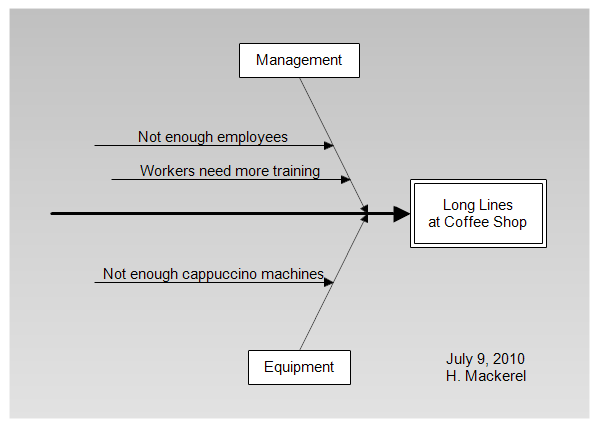
Single-tick the box and start composing to include text (for the present, you can type "Problem" as a placeholder). Select a rectangle from the shape library and add it to the correct side of your slide. The head of a fishbone diagram PowerPoint -the furthest right rectangle-contains the diagram's focal problem articulation.

Or then again, for a more natural, productive arrangement, jump to the following area to find out going to make a,nbsp fishbone diagram PowerPoint.
FISHBONE DIAGRAM TUTORIAL HOW TO
To figure out how to make a fishbone diagram in PowerPoint, follow the steps beneath. That is the reason we've separated the procedure for you. If you've attempted to make diagrams in PowerPoint, you presumably realize how disappointing it tends to be-we certainly do. How to Create A Fishbone Diagram on PowerPoint It is a diagram you should have available to you if you make vital or authority related presentations.Ģ. The device's fundamental advantage is that it encourages you to investigate all the potential causes for an occasion without inclinations.

It is also called the Ishikawa Diagram and Cause and Effect Diagram.Ĭoncept maps work very well for classes or substances with visual components or when it is critical to see and comprehend connections between various things. It uses a simple and justifiable format that helps to identify the wellsprings of procedure variety. If you have to paraphrase what was said (because of space requirements, complexity, etc.) confirm with the group that what you wrote was what was said.Fishbone diagram distinguishes and composes the potential causes of a business issue. When the silence starts to creep in, you have your first clue that perhaps you have enough to get started.Īs facilitator, you will write the statements as they come out during the discussion. As long as the discussion keeps going, people are still brainstorming. #3: Keep brainstorming until the ideas run out. People are often unsure of how many causes to identify. A common one is to start with the “People” category, but by the time 10 causes are identified under that category, you may choose to split it, for example as: “Nurses” and “Doctors.”

Sometimes a main category can become too big. For example, “front desk is short-staffed” could be placed under the category of People, but also Culture. As a facilitator, remind the participants that listing the cause is more important than where it goes. #2: The cause is more important than the category. People often get confused or stuck on what category a cause should go into. Whereas “front desk is short-staffed” focuses on a potential cause (what to fix). For example, if the problem is delays at patient check-in, “add front desk personnel” offers a solution (how to fix).

Simply acknowledge any comments by writing them to the side (don’t disregard any comments, it’s demoralizing) and help everyone remember the difference between the two. #1: Help the team focus on identifying causes, not solutions. It’s common for people to brainstorm solutions (how to fix), rather than causes (what to fix). Here are the top three tips for leading a successful fishbone: A successful fishbone diagram is led by a facilitator-one individual on the team who’s job is to remain impartial to the discussion, write down the identified causes on the fishbone diagram, and let the participant discussion flow freely.


 0 kommentar(er)
0 kommentar(er)
